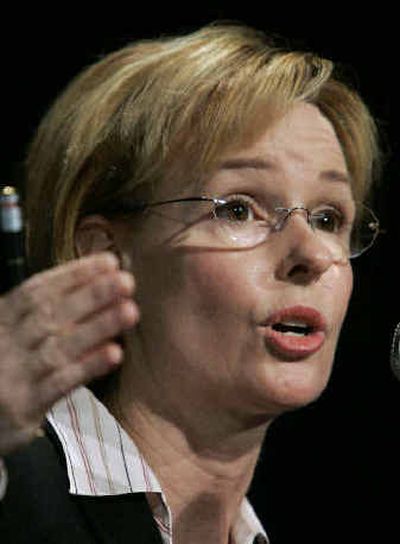Researchers working on better treatment, testing for autism

SEATTLE – Early intervention and treatment of autistic children can yield significant results, an expert said Thursday.
Persuading the insurance industry that treatment is worthwhile is complicated by a lack of studies, but that situation is changing, said Dr. Geraldine Dawson, director of the University of Washington Autism Center, in a keynote address to the Autism Society of America’s 35th annual conference.
The three-day session began Wednesday.
Autism is a brain disorder that can profoundly affect language skills and social interaction.
There are varying levels of disability in the autism spectrum, ranging from those who are totally cut off from others to high-functioning individuals who can excel in the mainstream.
The National Institutes of Health is collaborating now with the National Alliance for Autism Research to pool the available research – in genetics, brain structure and chemistry, diagnosis and treatment.
“I think that’s going to change the landscape … over the next three to five years,” Dawson said, urging parents, who often blame themselves for a child’s lack of progress, “not to put much weight on studies done even 10 years ago.”
For example, while scientists long believed most progress in challenging autism was made before age 6, researchers now find tremendous changes are made at elementary school age, between 5 and 10.
“We’re really getting a very different picture,” Dawson said.
The belief that 50 percent of autistics would “never develop connective speech” has changed for the better. Now the figure is 25 percent, and the goal is zero to 10 percent.
“I believe we’ll probably be able to get there,” Dawson said.
Some studies suggest the disorder might affect 1 in 250 newborns.
That’s 10 times the estimates of a decade ago, though many scientists believe the increase reflects better diagnosis. As many as 1.5 million people nationally have some form of autism, the society said.
The optimum amount of intervention is a subject for debate.
For a time, experts recommended 40 hours weekly of one-on-one instruction – a tough standard for working families.
“We have no idea if that’s necessary,” Dawson said, or even feasible with toddlers, who need naps and other care.
But the general rule for intervention, she said, is the sooner the better.
Diagnostic tools have improved to the point that autism can be reliably detected by age 2, but the average age of diagnosis is about age 4, Dawson said.
While she and other experts are working to make earlier diagnosis possible, Dawson said alert parents and pediatricians will always be crucial to the process.
Genetics is a factor in the disorder, she said. If an identical twin has autism, in 95 percent of cases the other twin has at least social or language difficulties.
Genetic research could lead to a blood test allowing diagnosis as early as three to six months, she said.
Other possible factors that could contribute to the disorder include infection, injury, diet or chemical toxins, she said.
Researchers have not yet identified the gene at issue in autism. Nor are its physical effects fully understood.